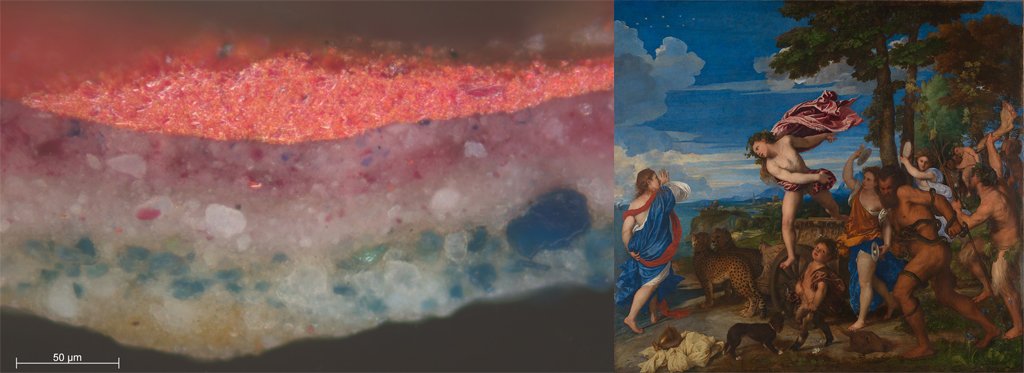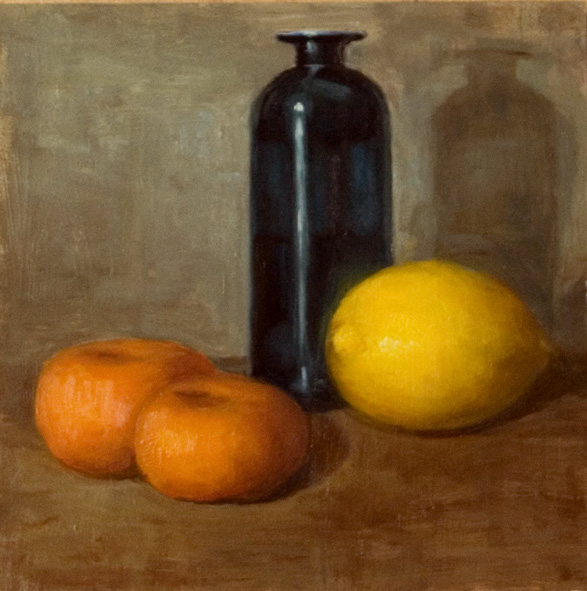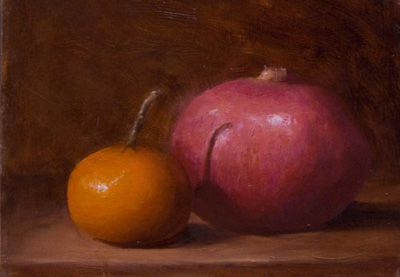I must confess that I have always been a bit geeky about painting technique and when I started trying to learn how to paint the word “glazing” seemed to be something of a siren call, beckoning me to the lost land of the old masters; a mysterious land of beautifully lit, richly glowing, wonderous paintings.
Like all siren calls though, this one was dangerous, and led to blind alleys and much frustration. Concerning technique it is very tempting to read too much and paint too little, very easy to have so much theory in your head you forget to put it to a practical test. I have to admit that for many years I lost sight of the simple fact that all that matters is the finished product, with a painting the how of its production is of no concern to the viewer, a bad painting remains just that however “sophisticated” your technique, and there can be a temptation to fetishize traditional methods and materials. When reading of old master paintings, glazing is often cited as a key part of their technique, the “secret” of the old masters, we are often told, is their hugely complex system of applying glazes . Vasari (I think it was) mentions Titian using 30 or 40 layers of glazes and foolish painters (in which group I include myself) reading this have thought that the more they pile on the layers of paint the more their pictures increase in merit and signifigance.

Of course this is nonsense. If you actually try glazing you soon realise that only two or three layers can register to the eye. Whatever is buried under 30 layers of paint remains buried for all time except to the modern imaging machines of the restorer. In previous centuries these myths of the complexity of old painting have, I think, been deliberately fostered by artists and connoisseurs alike. There is a story that Sir Joshua Reynolds the first President of the Royal Academy scraped back a Titian in an attempt to discover his secret, but if so he woud have been surprised at what he found. Thanks to the development of imaging techniques we can now see these paintings in a way that Reynolds could only have dreamed of, and the great news is they are really not that complicated after all ! Above is a cross-section from an area of Titians early masterpiece “Bacchus and Ariadne” and we see just three layers of red to build up the folds of Bacchus’ cloak over the blue sky, nothing more and analysis of almost all paintings of this period tells a similar story. If the old masters knew a secret it was this: the simplest way to achieve the desired result is the best way.


So, to my own experiments with glazing, and a problem hit me in the face almost as soon as I started. How to reverse engineer a painting? In this little picture on the left, above, which I did first, for example, I knew it would be difficult to keep high chroma in the tangerine both in the lights and shadows but what colour should I underpaint with to allow my glazes to get me there. Well I couldn’t think of anything better than the right colour of the tangerine itself, how could using another not hinder my chance of hitting those high chromas? I did do an underpainting in a near neutral raw umber, but this should really be considered as part of the drawing, ie describing the form, and was kept much higher in value than the real object precisely so that it didn’t influence the later additions of colour. So on top of the raw umber I painted the tangerine with the correct local colour fairly solidly (in Munsell terms about 2.5YR) and then the glazing comes in only as a way of getting up to the highest chromas and refining the modelling.
So despite all my fancy ideas, when faced with the practical problems I discoverd that I couldn’t use glazing as anything other than a tool for finishing. That is, I could use the final layers either transparently or semi transparently and manipulate them on the canvas to refine the form and colour. I could use brushes or fingers, add thicker paint to a thin glaze or to a solid base. but always as a means of bringing an image to its completion. At this stage also edges can be softened and painted over which adds another weapon to the amoury and I have always found edges difficult. Thin paint usually makes a quiet statement and is ideal for subtle modulations. I found where I wanted to lose an edge I could achieve this effect by painting boldly over the edge of the object into the background with a true, that is transparant, glaze
In this little picture above right, the colour of the pomegranite was very complicated, a mottled combination of a purplish red and a variation of yellow ochre. Again having modelled the fruit using solid colour, I used glazes to try and approach the intricate patterns on the surface. At this point I don’t think there is any useful distinction to make between a “glaze” or a “scumble”, its just paint in varying degress of thickness modifying, but not obliterating, what is underneath it. A stroke could serve a double purpose of changing the local colour and modulating form. Transparent paint always lowers value though so its important to remember that fact when using pure glazes and that is why they are such a lovely way of enhancing shadows. In fact the early Flemish painters built up their draperies by adding extra layers of glazes for half tones and again for shadows resulting in the beautifully rich glowing colours they are famous for, but note, the same hue (or something very close) was used throughout.
This last point, which hints at one exception to the rule of using glazing as a finishing tool, is likely to lead me into a further lengthy digression about the different ways the “early adopters” of oil paint, both in the Netherlands and Italy used underpaintings and glazes. This post is already overly long though so that will have to wait for next time.


‘A stroke could serve a double purpose of changing the local color and modulating form’ -my geekiness goes woo! Except it needs a lot of practice and knowledge of and experience with transparency of the pigment used. Love the painting. Thank you for sharing and looking forward to more indeed.